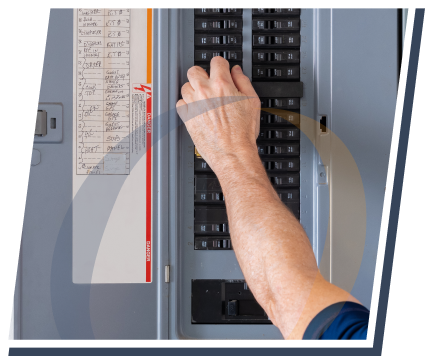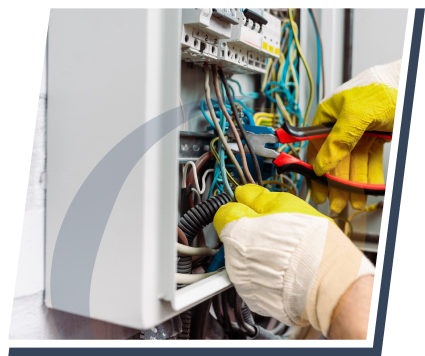Many area homeowners are choosing E&W Electrical Solutions for electrical panel upgrades in Murray, KY. The power demand for the average household has grown considerably over the years. Often, electrical panels in older homes aren’t up to the task. That can increase the risk of electrical fires and present other safety issues. An inadequate panel can undermine a home’s energy efficiency. It can also lead to a variety of home convenience and functionality issues.
Electrical Panel Upgrades in Murray, KY
Electrical Services That Are $500 Or More

Modern Electrical Panel Upgrades
Electrical panel upgrades can involve augmenting the existing panel or replacing it altogether. Not having enough amp capacity is an example where a full replacement is common. Many older homes have 100-amp electrical panels. The National Electrical Code (NEC) minimum is now 150 amps. Still, many modern households need 250 amps or more.
If the amp capacity is adequate, circuits are an area where we’ll often upgrade the existing panel. A common homeowner complaint is that they don’t have enough outlets and lights in the rooms they use the most. Our Murray electricians can rectify that situation by adding additional circuits up to the panel limit. It’s also important to ensure we don’t overload any one circuit. Every outlet, switch, light, and so forth counts toward the limit.
The NEC requires GCFI, ACFI, and combination outlets in certain usage scenarios. It requires GCFI, for instance, in bathrooms, kitchens, and other rooms where there’s water. You may also want them in rooms where you’ll have an aquarium, washer, or other water-using appliance. The code requires ACFI to help reduce the risk of electrical fires.
Whole-house surge protection is now code as well, but many homes built before 2020 don’t have it. The NEC specifically requires Type 2 surge protection, which integrates directly with the panel. A Type 2 surge protective device (SPD) protects against indirect lightning strikes. It also protects against internal surges, such as from generators and air conditioners.
For larger homes, subpanels are a common panel upgrade. These provide a smaller panel for specific areas. They’re often installed for pools and hot tubs. Subpanels are also effective for satellite offices and other disconnected workspaces.
- Flickering lights
- Panel older than 25 years
- Frequent tripped circuit breakers
- Loud or unusual noises from the panel
- Corrosion or other visible panel damage

Murray Upgrades for Electrical Panels
E&W Electrical Solutions has been serving Murray homeowners since 1980. We’re a family-owned and operated business that’s committed to the community we serve. You can expect quality workmanship using the best products and materials. Flexible financing options are available to qualified customers. We also back all our work with workmanship guarantees.
E&W Electrical Solutions is the top residential electrical contractor for electrical panel upgrades in Murray. To learn more about your options, call us today, or contact us online.